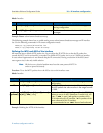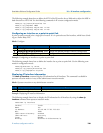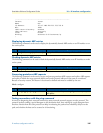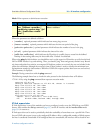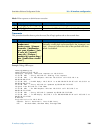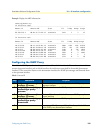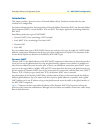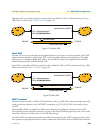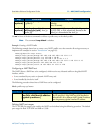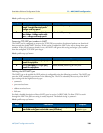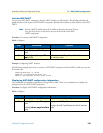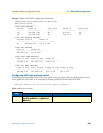
Introduction 133
SmartWare Software Configuration Guide 11 • NAT/NAPT configuration
Introduction
This chapter provides a general overview of Network Address (Port) Translation and describes the tasks
involved in its configuration.
For further information about the functionality of Network Address Translation (NAT) and Network Address
Port Translation (NAPT), consult the RFCs 1631 and 3022. This chapter applies the terminology defined in
RFC 2663.
SmartWare provides four types of NAT/NAPT:
• Dynamic NAPT (Cisco terminology: NAT Overload)
• Static NAPT (Cisco terminology: Port Static NAT)
• Dynamic NAT
• Static NAT
You can combine these types of NAT/NAPT without any restriction. One type of profile, the ‘NAPT Profile’,
holds the configuration information for all four types where configuration is required. The remainder of this
Section shortly explains the behavior of the different NAT/NAPT types.
Dynamic NAPT
Dynamic NAPT is the default behavior of the NAT/NAPT component. It allows hosts on the local network to
access any host on the global network by using the global interface address as source address. It modifies not
only the source address, but also the source port, so that it can tell different connections apart (NAPT source
ports are in the range 8,000 to 16,000). UDP and TCP connections from the local to the global network trig-
ger the creation of a dynamic NAPT entry for the reverse path. If a connection is idle for some time (UDP: 2
minutes, TCP: 12 hours) or gets closed (only TCP), the dynamic NAPT entry is removed.
An enhancement of the Dynamic NAPT allows to define subsets of hosts on the local network that shall use
different global addresses. Up to 20 subsets with their respective global addresses are possible. Such a global
NAPT address can be any IP address as long as the global network routes the traffic to the global interface of
the NAT/NAPT component.
Figure 17 illustrates the basic and enhanced behavior of the Dynamic NAPT. The big arrows indicate the
direction of the connection establishment. Although only a local host can establish a connection, traffic always
flows in both directions.



